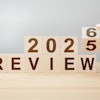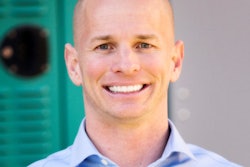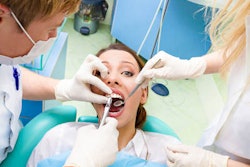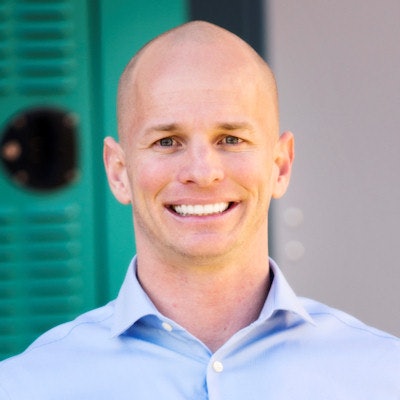
The entire dental industry has spent the majority of 2020 in recovery mode. We've all been focusing on the immediate needs of our families, staff, and patients. We have been recovering from the unexpected -- but there is a problem with this. We have only been spending time on immediate problems and not looking toward the future. Doctors are thinking about navigating the next week. They are looking at fewer patients coming in, longer appointments, personal protective equipment (PPE) for team members and patients, infection control, contactless payments, etc.
There is a big problem happening in October 2020. On Tuesday, October 19, to be exact, and no one is talking about it because we are all so focused on the immediate.
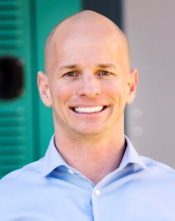 Curtis Marshall is the director of partner operations for Dental Intelligence.
Curtis Marshall is the director of partner operations for Dental Intelligence.While everyone has been in recovery mode, we have forgotten that virtually all of those patients who were scheduled to come in during March, April, and May got bumped. Perhaps you've been able to see a portion of them in the past few weeks, but many more have yet to reschedule. With most patients on a six-month appointment schedule, this likely means that you have very few, if any, patients scheduled to come in during the fourth quarter of 2020.
It is easy just to focus on the immediate problem, but when we do, we miss forecasting the future of the practice. If we don't focus on the fourth-quarter schedule until the fourth quarter, it will soon be too late to fix the problem.
Dental Intelligence recently completed a comprehensive data analysis of over 8,000 U.S.-based dental practices' fourth-quarter 2020 hygiene schedules and discovered a disaster waiting to happen. In many instances, we saw zero appointments currently on the schedules of the practices we analyzed. With so much focus on the heavy volume coming through practice doors right now, it's not at all surprising that no one is thinking about what's (not) scheduled four to six months from now. But that needs to change -- and soon.
How's your hygiene reappointment percentage?
This issue is serious, but luckily the solution is actually quite simple. Focus on increasing your hygiene reappointment percentage. What's hygiene reappointment percentage? The percentage of hygiene patients who on the same day of their hygiene visit schedule a subsequent hygiene appointment before leaving the dental office.
Our analysis has shown that a thriving practice reappoints, on average, 90% or more of their patients for their next hygiene appointment before the patient walks out the door. As we've looked at the fourth quarter of 2020, we have seen many practices in the low teens, which is worrisome.
Even practices normally at 90% are way down from where they would typically be. This happens when patients break appointments and aren't immediately rescheduled. Each time this happens, that hygiene reappointment percentage drops. With hundreds if not thousands of pandemic-related cancellations and broken appointments affecting each dental practice, there needs to be a focused effort to strategically reschedule those patients or a painful reckoning is likely ahead.
Bringing the point home
Two recent articles here on DrBicuspid.com bring this point home.
According to one of the articles, about half of adults reported they or a family member skipped dental and medical visits due to COVID-19 in a poll from the Kaiser Family Foundation (KFF), despite a surge of people leaving home more frequently to shop, visit family, and work. In the poll, 52% of adults said they or a family member in their household skipped or delayed dental or medical care due to COVID-19 during recent months. That figure is 4% higher than it was in May. The KFF Health Tracking Poll for June 2020 was released on June 26 and included responses from about 1,300 people.
"Dental care was the most likely to be skipped or postponed, followed by regular checkups or physical exams," according to KFF.
This is obviously concerning. How many of these skipped appointments were your patients? Unless they are being contacted to reschedule these missed appointments, there are huge and growing holes in your future schedule.
The second article provides further affirmation of how important it is for practices to be hyperfocused on their fourth quarter. According to current industry data, dental spending in the U.S. is estimated to plummet by up to 38% of projected pre-COVID-19 levels in 2020. At roughly $92 billion, that would be $56 billion less than projected before the pandemic, according to the latest information released by the ADA's Health Policy Institute.
What to do?
Although 2020 may still turn out to be one of your most challenging years ever, it doesn't have to be that way. Many practices we work with at Dental Intelligence have come out of the shutdown with record performance and a plan for strategically scheduling their patients.
For example, Sullivan Dental Partners in Brentwood, TN, spent time during the shutdown planning for the moment when the practice would reopen. They decided to focus on their "high-value" patients -- those who would help them come out of the shutdown quickly. They focused on their existing treatment plans and used data to "cherry pick" the best opportunities to come back strong. They didn't use their practice management software to do any of this: It was all from their Dental Intelligence growth platform. They prioritized their follow-ups based on the dollar amount of their treatment plans and then began reaching out to those patients to reschedule them.
What was the result? Sullivan Dental went from doing under $40,000 in emergency-only treatment in April 2020 to doing over $350,000 production in May -- one of their highest months ever in the history of their practice. And here is the best part. They have a strategic plan in place using Dental Intelligence to make October an even better month than May. They are proactively planning for the future of their practice.
How was this possible? Instead of trying to schedule new patients or every existing patient in no particular order, Sullivan stayed focused on production per visit (PPV) to make the most of each patient visit.
In May of 2018, for example, they were averaging $404 PPV. In May of 2019, that had increased to $531 PPV. By continuing to focus on this metric, in May of 2020, the practice increased their PPV to $712. That's almost double what they were doing just two years ago. Simply by focusing on certain patients and making them a priority they were able to see a $200 per patient increase.
Right now, you may be on the verge of exhaustion. Having few (if any) appointments on your schedule might even sound like exactly what you need at the moment. However, the ramifications of this on your patients and practice could have a far-reaching impact. Take care of your future practice by planning to succeed in October today. Use your data to plan for the future, and don't let the big problem be your big problem.
Curtis Marshall is the director of partner operations for Dental Intelligence.
The comments and observations expressed herein do not necessarily reflect the opinions of DrBicuspid.com, nor should they be construed as an endorsement or admonishment of any particular idea, vendor, or organization.
